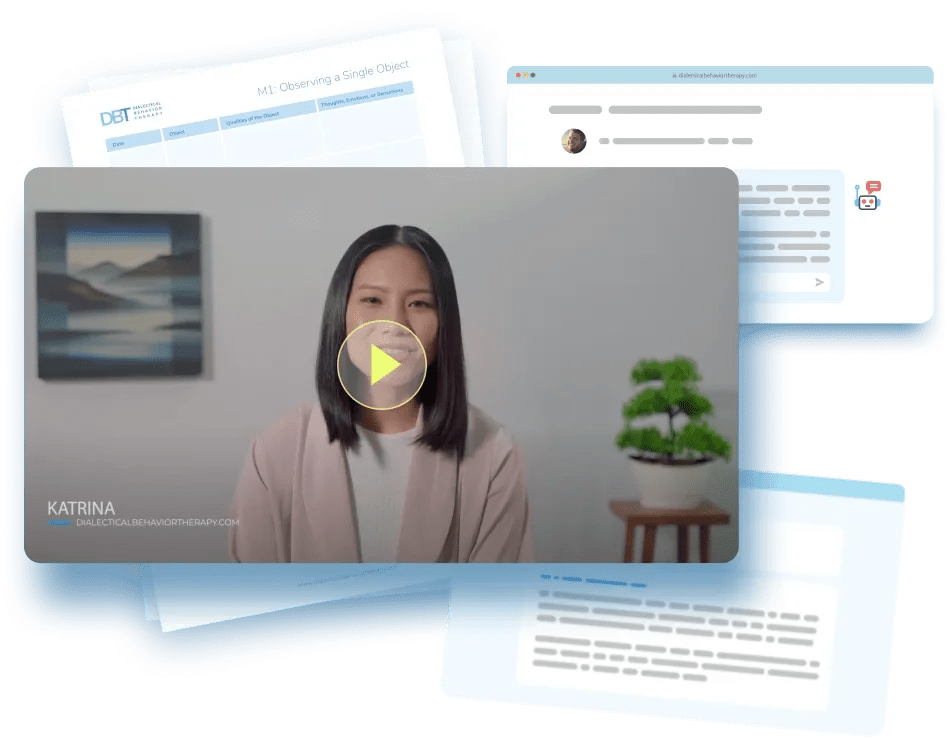OU4: Willingness Dial
Virtual Coach
Work step-by-step through the Open Up exercise with the virtual coach.
Introduction
When discomfort shows up—anxious flutter, angry heat, bored slump—most of us reflex‑shrink: “Make it stop!” The Willingness Dial flips that reflex. Borrowed from the original ACT metaphor set (Hayes et al., 1999), it imagines your openness to experience as a volume knob from 0 (totally closed) to 10 (fully open). Instead of forcing feelings down, you consciously “turn the dial up” and notice what changes. Research on experiential avoidance shows that even a brief willingness prompt reduces avoidance behavior and frees cognitive bandwidth for valued action.
Instructions
Goal: Practice on one challenging feeling daily for 1 week.
Time: ≈ 3 minutes Debrief: 30-second note on dial setting & body shift.
1. See the Dial
Close your eyes and imagine a round dial labeled 0–10. This is your mind’s “willingness meter.”
Try this: Picture a silver stereo knob with textured edges and bold numbers. Where’s the pointer?
Pro tip: Add color, texture, or even a soft clicking sound as it turns. The more vivid, the easier to find next time.
2. Check the Setting
Ask: “Where is my willingness right now?” Let the first number that comes to mind stand. No overthinking.
Example: Before a big event, your dial might flash a 3—pretty shut down.
Pro tip: No judgment. Treat the number like weather: not good or bad—just information.
3. Nudge Up One Notch
Gently invite the dial to move one click higher. Notice any shift in your breath, posture, or tension.
Example: Dial shifts from 3 → 4. Your chest loosens slightly. Breath deepens.
Pro tip: Try 3 slow breaths (in for 4 sec, out for 6) to help your body register the shift.
4. Notice & Name
With the new setting, scan your body and mind. What’s different? Silently label sensations or thoughts.
Example: “Tingling hands… lighter stomach… ‘Maybe I’ll survive.’”
Pro tip: Picture each thought or feeling like a leaf floating downstream—acknowledge and release.
5. Decide Next Action
Ask: “With willingness at X, what tiny step toward my value can I take?”
Example: At willingness 4, you text “See you tonight?” to the event host. Small, but forward.
Pro tip: Tiny > perfect. Even adding the event to your calendar counts.
Worksheet & Virtual Coach
FAQs
What if the dial won’t budge?
Try micro‑nudges: 3 → 3.2. Or imagine adding lubricant to rusty gears—metaphor often unlocks movement.
Is higher always better?
Higher ≠ morally superior. Aim for the sweet spot that allows valued action without flooding.
Do I need a strong visual imagination?
No. Use a physical object—a real volume knob, thermostat, or phone brightness slider—and move it as you breathe.
How does this differ from relaxation breathing?
Relaxation targets arousal; the dial targets openness. Relaxation is a bonus, not the goal.
Disclaimer
If you have any behavioral health questions or concerns, please talk to your healthcare or mental health care provider. This article is supported by peer-reviewed research and information drawn from behavioral health societies and governmental agencies. However, it is not a substitute for professional behavioral health advice, diagnosis, or treatment.

